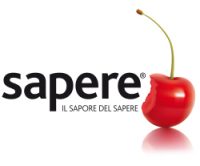Dop e Igp
Department of Chemistry Sapienza University of Rome
By Luigi Campanella
273 European scientists (19 Italians), following a French proposal, have sent an appeal to the EU for the introduction of the so-called Nutriscore, a traffic light system for labelling food, which is opposed by some countries, including Italy.

This opposition is based on the fact that Nutriscore would benefit ultra-processed food products to the detriment of PDOs and PGIs, products of excellence made with only the highest quality ingredients, typical of our agricultural and food production chain, such as Parma ham or Parmesan cheese. The system is based on five colours from green to red and five letters from A to E. The aim is to guide consumers towards foods that protect their health. It is a scoring system designed to simplify the identification of nutritional values. The calculation of the score takes into account seven different parameters: fibre, vegetables, fruit and protein positive, calorie content, saturated fat and sodium negative.
The algorithm has been criticised by some governments, including our own, by some industry and farmers’ groups, and by nutritionists for oversimplifying nutritional information and reducing complex foods to single ingredients, resulting in advantages for processed foods and clear disadvantages for healthy fats such as olive oil. The result is that some states are calling for the application of Nutriscore to be postponed, while others are asking for it to be changed: for example, the reference to 100g as the amount of food is considered inappropriate.
I believe that the objection to Nutriscore should be based on other aspects that I discussed in another recent post. Chlorophyllous photosynthesis allows CO2 and water to be transformed from solar energy into energy-rich products that humans use as food. Clearly, in order to make the products of photosynthesis edible, humans have to add more energy (ploughing, sowing, harvesting, treating) and in doing so contribute to climate change.
It is therefore important to choose a diet that requires the minimum amount of energy added to the sun’s energy, energy which today is largely provided by fossil fuels. From these two data, energy content and added non-solar energy per unit of weight or volume, we derive the energy efficiency of a foodstuff. It is our task to educate people to respect life’s energy requirements with food that is as energy-efficient as possible. In this sense, the well-known Mediterranean diet is a good guide to avoiding high meat consumption: meat is a foodstuff that requires an average of 7 litres of oil and about 10,000 litres of water per kg produced.
European greenhouse gas emissions from food meat production have exceeded those of all cars in the 28 Member States.Energy efficiency of food would perhaps be a more appropriate index than Nutriscore
